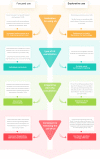Danish general practitioners have found their own way of using point-of-care ultrasonography in primary care: a qualitative study
- PMID: 31253102
- PMCID: PMC6599254
- DOI: 10.1186/s12875-019-0984-x
Danish general practitioners have found their own way of using point-of-care ultrasonography in primary care: a qualitative study
Abstract
Background: General practitioners increasingly use point-of-care ultrasonography despite a lack of evidence-based guidelines for their appropriate use in primary care. Little is known about the integration of ultrasonography in general practice consultations and the impact of its use on patient care. The purpose of this study was to explore general practitioners' experiences of using ultrasonography in the primary care setting.
Methods: Adopting an explorative phenomenological approach, we performed semi-structured interviews with general practitioners who used ultrasonography in their daily work. Thirteen general practitioners were recruited stepwise, aiming for maximum variation in background characteristics. Interviews were conducted at the general practitioner's own clinic. Transcription and systematic text condensation analysis began immediately after conducting each interview.
Results: The general practitioners described using ultrasonography for both selected focused examinations and for explorative examinations. The two types of examinations were described differently for each of the following emerging themes: motivation for using ultrasonography, ultrasonography as part of the consultation, selection of an ultrasound catalogue, and consequences of the general practitioner's ultrasound examination. The general practitioners had chosen and integrated their own individual ultrasound catalogue of focused examinations as a natural part of their consultations. The focused examinations were used to answer simple clinical questions and they had a significant impact on the patients' diagnoses, clinical pathways and treatments. The general practitioners considered their own catalogue of focused examinations as their comfort zone. However, they also performed explorative ultrasound examinations outside their catalogue. These scans were performed to train, gain or maintain ultrasound competences or as explorative examinations driven by curiosity. The explorative ultrasound examinations rarely had an impact on patient care.
Conclusions: This study describes how general practitioners found their own way of using ultrasonography in general practice and selected a personal catalogue of ultrasound examinations that was applicable, relevant and meaningful for their daily clinical routines. This study may serve to inform implementation strategies in general practice by offering insights into central aspects that drive general practitioners' behaviours.
Keywords: Family medicine; General practice; Implementation; Interviews; Point-of-care ultrasound; Primary care; Qualitative methods; Ultrasonography.
Conflict of interest statement
The authors report no competing interests.
Figures


Similar articles
-
Learning strategies of general practitioners striving to achieve point-of-care ultrasound competence: a qualitative study.Scand J Prim Health Care. 2022 Mar;40(1):67-77. doi: 10.1080/02813432.2022.2036483. Epub 2022 Feb 15. Scand J Prim Health Care. 2022. PMID: 35166178 Free PMC article.
-
General Practitioners' Perspectives on Appropriate Use of Ultrasonography in Primary Care in Denmark: A Multistage Mixed Methods Study.Ann Fam Med. 2022 May-Jun;20(3):211-219. doi: 10.1370/afm.2795. Ann Fam Med. 2022. PMID: 35606122 Free PMC article.
-
Understanding factors that influence the use of risk scoring instruments in the management of patients with unstable angina or non-ST-elevation myocardial infarction in the Netherlands: a qualitative study of health care practitioners' perceptions.BMC Health Serv Res. 2014 Sep 22;14:418. doi: 10.1186/1472-6963-14-418. BMC Health Serv Res. 2014. PMID: 25242347 Free PMC article.
-
Point-of-Care Ultrasound in General Practice: A Systematic Review.Ann Fam Med. 2019 Jan;17(1):61-69. doi: 10.1370/afm.2330. Ann Fam Med. 2019. PMID: 30670398 Free PMC article.
-
Ultrasound imaging in the general practitioner's office - a literature review.J Ultrason. 2016 Mar;16(64):78-86. doi: 10.15557/JoU.2016.0008. Epub 2016 Mar 29. J Ultrason. 2016. PMID: 27104005 Free PMC article. Review.
Cited by
-
Factors affecting point-of-care ultrasound implementation in general practice: a survey in Danish primary care clinics.BMJ Open. 2023 Oct 17;13(10):e077702. doi: 10.1136/bmjopen-2023-077702. BMJ Open. 2023. PMID: 37848298 Free PMC article.
-
Effectiveness of a primary care clinical ultrasound classroom for family physicians as a formative intervention system, a quasi-experimental trial: Study protocol.Medicine (Baltimore). 2020 Jul 2;99(27):e19914. doi: 10.1097/MD.0000000000019914. Medicine (Baltimore). 2020. PMID: 32629625 Free PMC article.
-
Point-of-care ultrasound (POCUS): Assessing patient satisfaction and socioemotional benefits in the hospital setting.PLoS One. 2024 Feb 16;19(2):e0298665. doi: 10.1371/journal.pone.0298665. eCollection 2024. PLoS One. 2024. PMID: 38363766 Free PMC article.
-
Patients' experiences of the use of point-of-care ultrasound in general practice - a cross-sectional study.BMC Fam Pract. 2021 Jun 18;22(1):116. doi: 10.1186/s12875-021-01459-z. BMC Fam Pract. 2021. PMID: 34144701 Free PMC article.
-
Is there a place for point-of-care ultrasound in UK primary care?Br J Gen Pract. 2020 Jun 25;70(696):323-324. doi: 10.3399/bjgp20X710801. Print 2020 Jul. Br J Gen Pract. 2020. PMID: 32586800 Free PMC article. No abstract available.
References
-
- Bornemann P, Jayasekera N, Bergman K, Ramos M, Gerhart J. Point-of-care ultrasound: coming soon to primary care? J Fam Pract. 2018;67(2):70–80. - PubMed
Publication types
MeSH terms
LinkOut - more resources
Full Text Sources
Medical

